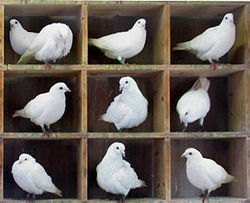We need more birds
Probability
Level
2
 True or false?
True or false?
Any of set of 501 numbers from (1, 2, 3, ... , 1000) contains two that are coprime.
Image Credit: Wikimedia McKay .
This question makes no sense
True
False
There is insufficient information
This section requires Javascript.
You are seeing this because something didn't load right. We suggest you, (a) try
refreshing the page, (b) enabling javascript if it is disabled on your browser and,
finally, (c)
loading the
non-javascript version of this page
. We're sorry about the hassle.
By Pigeon-Hole Principle, it's obvious that if we choose any of the 501 numbers from (1,2,3, ... ,1000), then there will be atleast one pair of numbers which would be consecutive. Therefore, those two consecutive numbers would be co-prime. Hence, the answer.